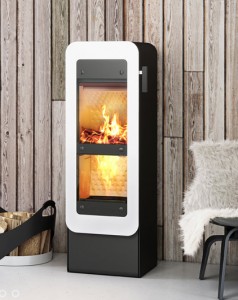Nelson City Council is not serving its residents well and frustration over woodburner regulations are more than justified, according to the director of a hightech energy company. Source: Stuff.co.nz
Envirosolve director Rene Haeberli has just been given resource consent for a Danish ultra low emission woodburner, called the bionic fire, from Environment Canterbury. But he said Nelson’s inflexible rules were posing a major problem to getting the woodburners into homes here.
“Even though my logburner is as clean or cleaner than any low emission pellet burner that they allow, it cannot be put into new houses.
“The council never made room in its laws that some time in the future there might be a ultra low emission logburner, and now we’re here with that the council doesn’t know how to put them because they have to rewrite the law.”
He said that was unbelievable.
“The council has said it will take two years to rewrite the law, by then the fire might be obsolete. And in the mean time people building new houses are still not allowed a log fire.
“The world is a very fast place these days and if the council continues to be slow it is always going to be behind.”
Mr Haeberli emigrated from Switzerland 20 years ago because “New Zealand is paradise” but he said it does not look after the people or environment well enough.
“New Zealand deserves better than this. Log fires are a part of New Zealand culture. We have plenty of timber and low and medium income people have access to timber normally and they don’t have to pay the bill at the end of the month for the heat pump. ”
He said it had cost him around $100,000 to bring the technology into the country.
The ultra-low emission burners have the same level of PM10 emissions (particles less than 10 micrometers in diameter that can get into the lungs) as low emission pellet burners, which can currently be installed in Nelson homes.
Mr Haeberli said it was a long process to bring the emissions levels down to 0.49 grams of particulate matter per kilogram of fuel burned, which is required to meet Canterbury’s clean air requirements.
The fire uses a batch-fed downdraft burner with two combustion chambers.
The top chamber operates the same as a traditional fire and the bottom chamber burns off the flue gas from the wood.
The downdraft function sends the gases to the bottom chamber, which then ignite.
“It means emissions are very low and the efficiency is very high, that is why you only need one kilogram of wood per hour.”
Mr Haeberli said as well as being environmentally friendly the woodburner looks like a piece of art and it “sets a standard in green modern living”.
He said it comes with a 360 degree swivel function so it can be installed in the centre of a room rather than on a wall like a traditional fireplace.
The fire costs $7870, with the cost of installation on top of that.
He said six had already been sold in Canterbury since it was granted consent three weeks ago.
Nelson mayor Rachel Reese said she had sought legal advice as to whether local regulations could be adjusted to allow its installation in Nelson homes.
Ms Reese said she needed to find out if the Environment Court would allow the council to adjust the law so the burners could be added to its approved burner list.
She said the legal inquiries were happening in tandem with the review of the Nelson air quality plan, but she expected the results much sooner than the completion of the air plan review. The air plan review will not be complete until 2016 or 2017.








